-
 Bitcoin
Bitcoin $117700
-0.03% -
 Ethereum
Ethereum $3805
0.49% -
 XRP
XRP $3.098
-1.00% -
 Tether USDt
Tether USDt $1.000
0.03% -
 BNB
BNB $792.8
-1.72% -
 Solana
Solana $177.9
-1.95% -
 USDC
USDC $1.000
0.02% -
 Dogecoin
Dogecoin $0.2202
-1.55% -
 TRON
TRON $0.3278
-2.92% -
 Cardano
Cardano $0.7641
-2.43% -
 Hyperliquid
Hyperliquid $42.21
-2.68% -
 Sui
Sui $3.758
-1.58% -
 Stellar
Stellar $0.4080
-3.21% -
 Chainlink
Chainlink $17.75
-0.33% -
 Bitcoin Cash
Bitcoin Cash $591.8
4.96% -
 Hedera
Hedera $0.2561
-3.09% -
 Avalanche
Avalanche $23.34
-4.24% -
 Litecoin
Litecoin $110.7
1.96% -
 UNUS SED LEO
UNUS SED LEO $8.956
-0.01% -
 Toncoin
Toncoin $3.410
0.79% -
 Ethena USDe
Ethena USDe $1.001
0.03% -
 Shiba Inu
Shiba Inu $0.00001288
-1.82% -
 Uniswap
Uniswap $10.07
-2.06% -
 Polkadot
Polkadot $3.807
-2.27% -
 Monero
Monero $308.2
-2.15% -
 Dai
Dai $1.000
0.03% -
 Bitget Token
Bitget Token $4.521
-0.30% -
 Pepe
Pepe $0.00001134
-1.52% -
 Cronos
Cronos $0.1457
0.65% -
 Aave
Aave $274.9
-2.47%
What is the difference between Bollinger Bands and Keltner Channels?
Bollinger Bands use standard deviation to gauge volatility and spot reversals, while Keltner Channels use ATR for smoother trend-following signals.
Jul 30, 2025 at 11:30 pm
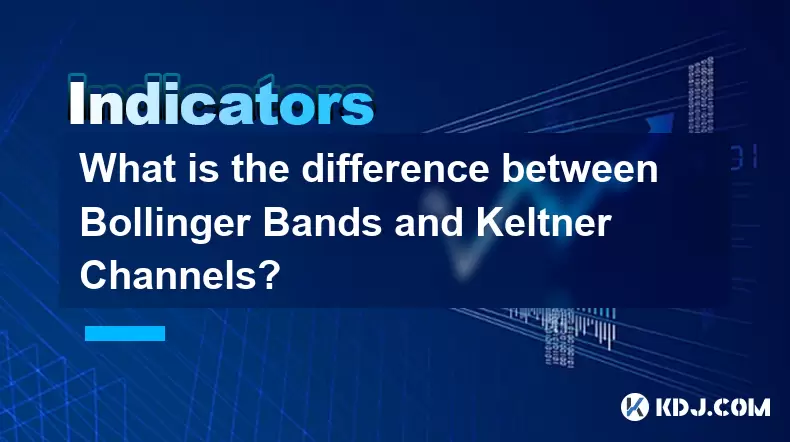
Understanding Bollinger Bands and Their Core Components
Bollinger Bands are a widely used technical analysis tool developed by John Bollinger in the 1980s. They consist of three lines plotted on a price chart: a simple moving average (SMA), typically over 20 periods, and two outer bands that represent standard deviations above and below the SMA. The default setting uses two standard deviations, which means approximately 95% of price action should remain within the bands under normal market conditions. The primary purpose of Bollinger Bands is to measure volatility and identify potential overbought or oversold conditions. When the bands contract, it signals a period of low volatility, often preceding a sharp price movement—a phenomenon known as the "Bollinger Squeeze." Conversely, when the bands expand, it indicates increasing volatility.
The formula for the upper and lower Bollinger Bands is as follows:
- Upper Band = 20-period SMA + (2 × 20-period standard deviation of price)
- Lower Band = 20-period SMA − (2 × 20-period standard deviation of price)
Traders monitor price touching or breaking through the bands as potential signals. For instance, if the price touches the upper band repeatedly without closing above it, this may suggest overbought conditions. Similarly, consistent touches of the lower band may indicate oversold levels. However, these signals are not standalone buy or sell triggers; they require confirmation from other indicators or price action patterns.
Exploring Keltner Channels and Their Structure
Keltner Channels are another volatility-based indicator, but they differ significantly in construction from Bollinger Bands. Developed by Chester Keltner, this tool uses an exponential moving average (EMA)—often over 20 periods—as the centerline. The outer bands are based on the Average True Range (ATR), a measure of market volatility that accounts for gaps and limit moves. The typical multiplier is 2 or 2.5 times the ATR, added to and subtracted from the EMA to form the upper and lower channels.
The calculation for Keltner Channels is:
- Upper Channel = 20-period EMA + (2 × 20-period ATR)
- Lower Channel = 20-period EMA − (2 × 20-period ATR)
Because ATR responds to price range rather than standard deviation, Keltner Channels tend to be smoother and less sensitive to sudden price spikes compared to Bollinger Bands. This makes them particularly useful in trending markets, where they can act as dynamic support and resistance levels. When the price moves outside the channel, it may signal strong momentum, though not necessarily a reversal. Some traders use Keltner Channels in conjunction with moving averages to identify trend direction and potential breakout points.
Volatility Measurement: Standard Deviation vs. Average True Range
The fundamental difference between Bollinger Bands and Keltner Channels lies in how they measure volatility. Bollinger Bands rely on standard deviation, a statistical measure that quantifies how much price deviates from its average. This makes the bands responsive to price dispersion and capable of highlighting periods of extreme movement. When volatility increases, the bands widen; when it decreases, they contract.
In contrast, Keltner Channels use the Average True Range (ATR), which calculates the average range between high and low prices over a specified period, including gaps. ATR focuses on price range and market noise rather than statistical distribution. This results in channels that adapt to changing market conditions more gradually. Because ATR does not assume a normal distribution of prices, Keltner Channels are less prone to overreacting to short-term price spikes. This distinction makes Keltner Channels more suitable for trend-following strategies, while Bollinger Bands excel in mean-reversion setups.
Visual and Behavioral Differences on Price Charts
When plotted on a cryptocurrency chart, Bollinger Bands exhibit a "breathing" effect—expanding and contracting based on recent volatility. During consolidation phases, the bands narrow significantly, creating the well-known squeeze pattern. Traders watch for a breakout in either direction once volatility resumes. The bands often act as dynamic resistance (upper band) and support (lower band), especially in ranging markets.
Keltner Channels, due to their ATR-based construction, appear smoother and less erratic. They do not contract as tightly during low-volatility periods, which means the "squeeze" effect is less pronounced. Instead, the price may trend along the upper or lower channel for extended periods, reflecting sustained momentum. In strong uptrends, the price often rides the upper Keltner Channel, while in downtrends, it hugs the lower band. This behavior makes Keltner Channels effective for identifying trend continuation rather than reversal opportunities.
Practical Application in Cryptocurrency Trading
In cryptocurrency trading, both tools can be applied to identify entry and exit points, but their usage depends on the trader’s strategy. For mean reversion traders, Bollinger Bands are ideal. A common setup involves waiting for the price to touch or breach the upper band in an overbought condition, then looking for bearish candlestick patterns or RSI divergence to initiate a short position. Conversely, a long position may be considered when the price touches the lower band in an oversold state.
For trend-following traders, Keltner Channels offer clearer signals. A breakout above the upper channel, confirmed by increasing volume and momentum indicators like MACD, may signal the start of a new uptrend. Traders might enter long positions and use the lower channel as a trailing stop. Similarly, a breakdown below the lower Keltner Channel could prompt short entries in a bearish market.
Both indicators can be combined for enhanced accuracy. For example, a trader might use Bollinger Bands to detect low volatility (squeeze) and then wait for a breakout confirmed by a move outside the Keltner Channel to validate the direction.
Customization and Parameter Adjustments
Traders can customize both indicators to suit different timeframes and assets. For Bollinger Bands, adjusting the period from 20 to 10 makes the bands more sensitive, while increasing it to 50 makes them smoother. Changing the standard deviation multiplier from 2 to 1.5 narrows the bands, increasing the frequency of touchpoints.
For Keltner Channels, modifying the EMA period or ATR multiplier alters responsiveness. A shorter EMA (e.g., 10 periods) makes the channel react faster to price changes. Increasing the ATR multiplier to 3 widens the channel, reducing false breakouts. On highly volatile cryptocurrencies like Bitcoin or Ethereum, a higher multiplier may be necessary to avoid whipsaws.
Frequently Asked Questions
What timeframes work best with Bollinger Bands in crypto trading?
Bollinger Bands are effective across multiple timeframes. The 1-hour and 4-hour charts are popular among swing traders for identifying reversals. Day traders often use the 15-minute chart to catch short-term squeezes. On longer timeframes like daily charts, the bands help assess macro volatility trends.
Can Keltner Channels be used alone for trading decisions?
While Keltner Channels provide useful context, they are best used with confirmatory indicators such as volume, RSI, or MACD. Using them alone may lead to false signals, especially during choppy or sideways markets where price oscillates within the channel without clear direction.
How do I set up Bollinger Bands on TradingView?
Click on "Indicators" at the top of the chart. Search for "Bollinger Bands." Select it, and the default settings (20-period SMA, 2 standard deviations) will apply. To customize, click the gear icon next to the indicator name and adjust the length and multiplier as needed.
Is there a way to combine Bollinger Bands and Keltner Channels effectively?
Yes. Overlay both indicators on the same chart. When Bollinger Bands show a squeeze and the price breaks outside the Keltner Channel, it can signal a high-probability breakout. This combination helps filter out false breakouts and confirms momentum direction.
Disclaimer:info@kdj.com
The information provided is not trading advice. kdj.com does not assume any responsibility for any investments made based on the information provided in this article. Cryptocurrencies are highly volatile and it is highly recommended that you invest with caution after thorough research!
If you believe that the content used on this website infringes your copyright, please contact us immediately (info@kdj.com) and we will delete it promptly.
- Bitcoin, Penguins, and Meme Coins: A Wild Ride in Crypto Town
- 2025-07-31 16:30:14
- Whale Movement and Altcoins: Buying Pressure Heats Up!
- 2025-07-31 16:30:14
- Pi Network's Price Crash: A Crypto Disappointment or a Buying Opportunity?
- 2025-07-31 17:10:12
- Ether Machine's ETH Accumulation: A New York Minute on Corporate Crypto Strategies
- 2025-07-31 17:10:12
- Bitcoin Price on the Edge: Trendline Break or Breakdown?
- 2025-07-31 17:50:12
- Dogecoin, Investors, and Ozak AI: A New Era of Crypto Investments?
- 2025-07-31 17:50:12
Related knowledge
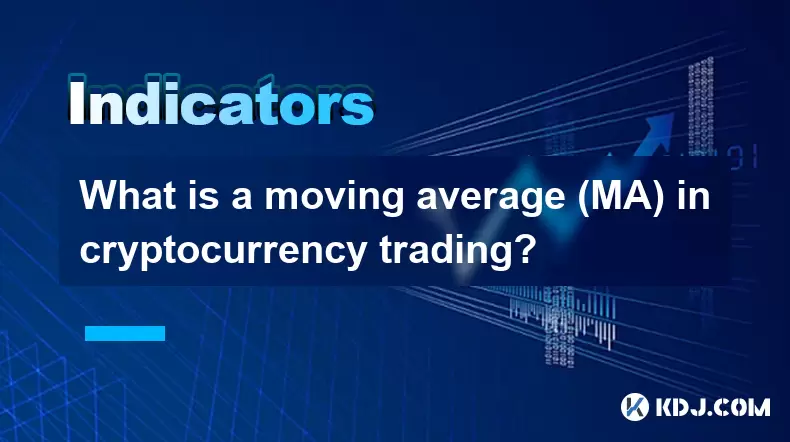
What is a moving average (MA) in cryptocurrency trading?
Jul 31,2025 at 06:30pm
Understanding the Concept of Moving Average (MA)A moving average (MA) is a widely used technical analysis tool in cryptocurrency trading that helps sm...
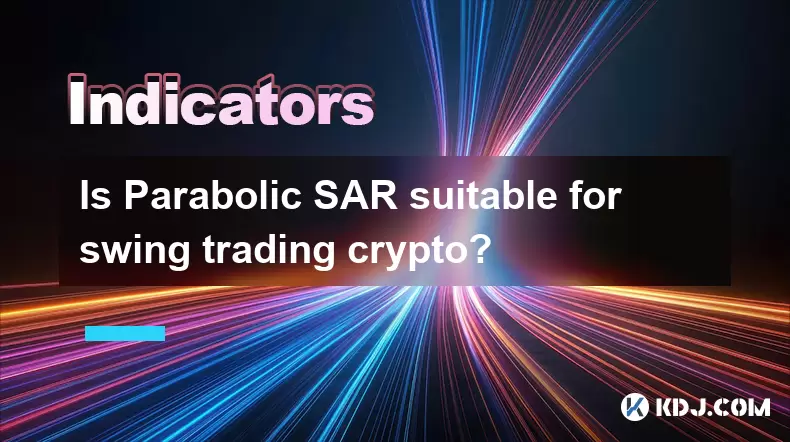
Is Parabolic SAR suitable for swing trading crypto?
Jul 31,2025 at 05:29pm
Understanding Parabolic SAR in Cryptocurrency TradingThe Parabolic SAR (Stop and Reverse) is a technical indicator developed by J. Welles Wilder that ...
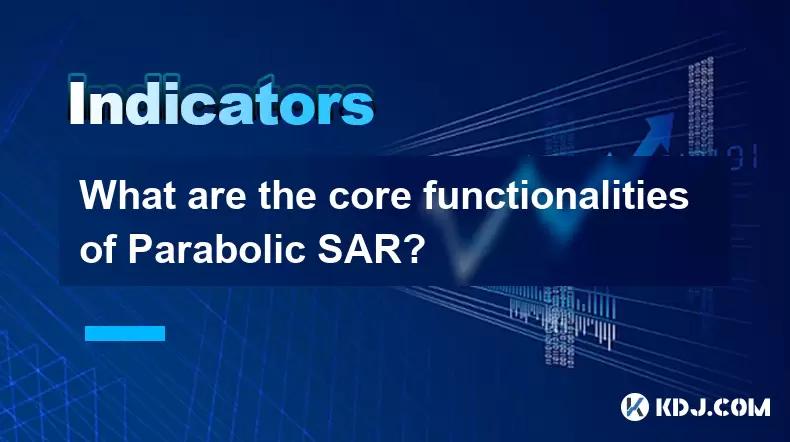
What are the core functionalities of Parabolic SAR?
Jul 31,2025 at 04:57pm
Understanding the Parabolic SAR IndicatorThe Parabolic SAR (Stop and Reverse) is a technical analysis tool developed by J. Welles Wilder Jr. It is pri...
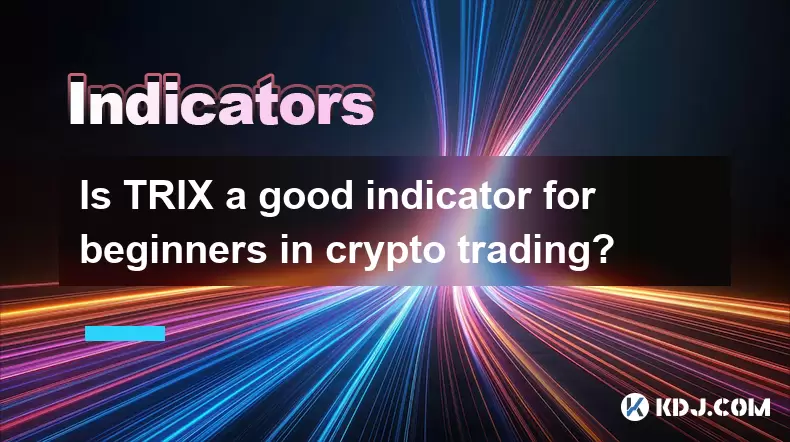
Is TRIX a good indicator for beginners in crypto trading?
Jul 31,2025 at 06:16pm
Understanding the TRIX Indicator in Cryptocurrency TradingThe TRIX (Triple Exponential Average) indicator is a momentum oscillator designed to filter ...
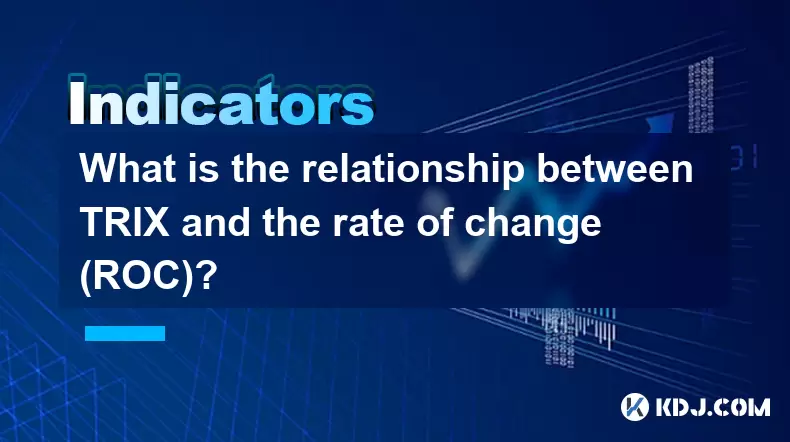
What is the relationship between TRIX and the rate of change (ROC)?
Jul 31,2025 at 03:14pm
Understanding TRIX and Its Core MechanismTRIX, or the Triple Exponential Average, is a momentum oscillator used in technical analysis to identify over...
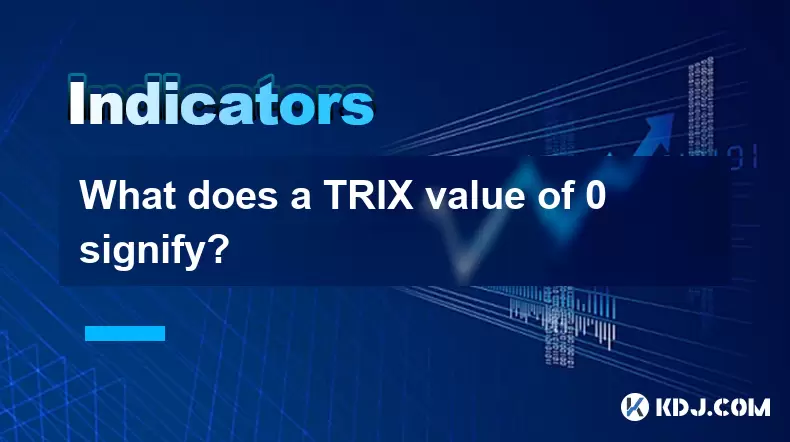
What does a TRIX value of 0 signify?
Jul 31,2025 at 02:21pm
Understanding the TRIX Indicator in Cryptocurrency TradingThe TRIX (Triple Exponential Average) indicator is a momentum oscillator used in technical a...

What is a moving average (MA) in cryptocurrency trading?
Jul 31,2025 at 06:30pm
Understanding the Concept of Moving Average (MA)A moving average (MA) is a widely used technical analysis tool in cryptocurrency trading that helps sm...

Is Parabolic SAR suitable for swing trading crypto?
Jul 31,2025 at 05:29pm
Understanding Parabolic SAR in Cryptocurrency TradingThe Parabolic SAR (Stop and Reverse) is a technical indicator developed by J. Welles Wilder that ...

What are the core functionalities of Parabolic SAR?
Jul 31,2025 at 04:57pm
Understanding the Parabolic SAR IndicatorThe Parabolic SAR (Stop and Reverse) is a technical analysis tool developed by J. Welles Wilder Jr. It is pri...

Is TRIX a good indicator for beginners in crypto trading?
Jul 31,2025 at 06:16pm
Understanding the TRIX Indicator in Cryptocurrency TradingThe TRIX (Triple Exponential Average) indicator is a momentum oscillator designed to filter ...

What is the relationship between TRIX and the rate of change (ROC)?
Jul 31,2025 at 03:14pm
Understanding TRIX and Its Core MechanismTRIX, or the Triple Exponential Average, is a momentum oscillator used in technical analysis to identify over...

What does a TRIX value of 0 signify?
Jul 31,2025 at 02:21pm
Understanding the TRIX Indicator in Cryptocurrency TradingThe TRIX (Triple Exponential Average) indicator is a momentum oscillator used in technical a...
See all articles

























































































